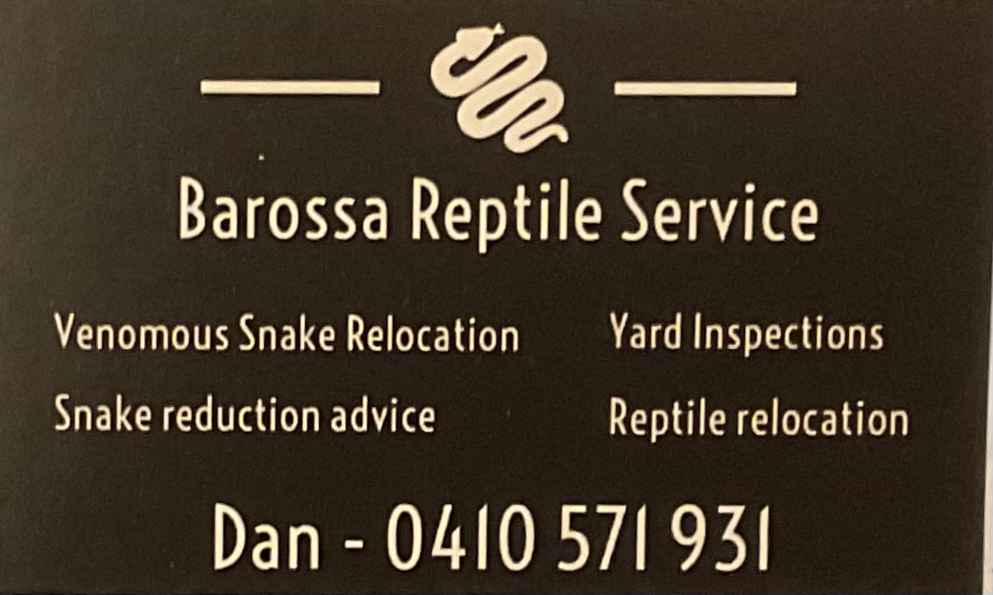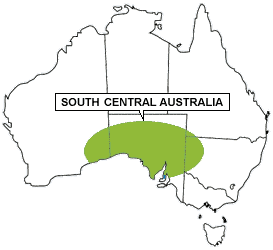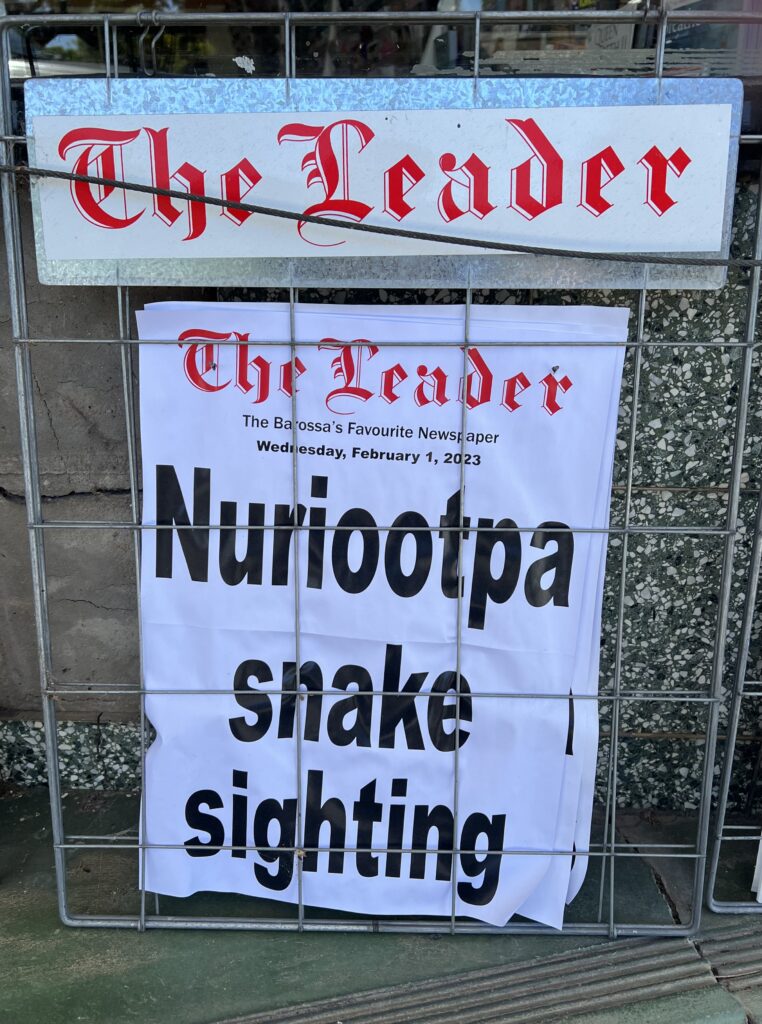
My friend Rich loves to torment me. Every article he finds filled with tales of deadly Australian insects, reptiles and sea creatures will eventually end up in my inbox. Or maybe I’ve misjudged him and he is really just concerned about our welfare while we’re here in the Land Down Under.
I always reassure him that we’ve never seen any of the deadly creatures this continent is known for.
That being said, what the hell kind of country has so many snakes — venomous snakes — that snake relocation is a viable business. Well, welcome to Australia.
Jamie found this odd business card posted on a bulletin board next to the check out line in our local grocery store.
Since we have never seen any of the legendary Australian killers, I wondered how many of them can actually be found here in the Barossa Valley. I Googled it. Based on what I found, Dan, the snake wrangler who owns this business, probably stays pretty damn busy.
Southern Death Adder – The name alone should scare the hell out of you. These ambush predators sits motionless, conceal themselves in leafy litter, sand or gravel. Instead of fleeing from approaching humans, they sit tight and risk being stepped on, making them far more dangerous to unprepared bushwalkers. Nearly half of those bitten will die without rapid antivenom intervention. The venom causes loss of motor and sensory function, including respiration, resulting in paralysis and death.
Pygmy Copperhead – Say goodbye to your loved ones if you get bitten and can’t get antivenom quickly. The venom can destroy both blood and muscle tissue. And just when it sounds as if it can’t get worse, the antivenom isn’t 100% effective and can’t completely neutralize the venom’s toxicity.

Yellow-faced Whipsnake – Although its venom isn’t generally considered dangerous to adults, a bite is still pretty damn unpleasant. It hurts like hell and causes localized pain and swelling ranging from moderate to severe, and sometimes causes paralysis and bleeding. Nice, huh?
Tiger Snake – Its bites are fatal if untreated, cause pain in the feet and neck, tingling, numbness and sweating, followed by breathing difficulties and paralysis. The venom also damages the blood and muscles, and can lead to renal failure.
Mulga Snake – Get ready for a frightening description: This, the largest venomous snake in Australia, also has the largest venom output of any snake in the world – up to 150mg in one bite. Mulgas bite savagely, even hanging on and chewing as they inject massive amounts of highly toxic venom into your bloodstream, destroying blood cells, muscles and nerves.

Red-bellied Black Snake – The good news? The red-bellied black snake is a bit less venomous than other Australian snakes on this list. The bad news? Its bite causes significant illness and requires medical attention. Its venom causes blood-clotting disorder plus muscle and nerve damage.
Dugite – Potentially the most lethal snake in the world, its venom causes coagulopathic and procoagulant effects. The last death attributed to a dugite was in a suburb of Perth in August 2015. A woman was bitten on her heel mid-afternoon while walking alone. She made it home, but collapsed while her husband was taking her to the hospital. Although an ambulance arrived within five minutes, it was too late. Medics were unable to revive her.
Eastern Brown Snake – This is one scary description: Fast-moving, aggressive and known for its bad temper, eastern brown snakes are responsible for more deaths every year in Australia than any other group of snakes. Its venom is thought to be the second most toxic in the world and causes paralysis and stops a victim’s the blood from clotting. So toxic is the venom that it may take many doses of antivenom to reverse. Victims may collapse within a few minutes. Say good night, Gracie.
Peninsula Brown Snake – Pray that you do not get bitten by one. Its venom is composed of neurotoxins that immobilize its prey, cardiotoxins that cause heart dysfunction, cytotoxins that cause cellular damage, and hemotoxins that solidify blood. The peninsula brown’s bite is intensely painful and it’s known for injecting high quantities of venom in a single strike.
Western Brown Snake – On one hand, herpatoligists say the western brown snake’s venom is not as toxic as its eastern brown cousin’s. On the other hand, they deliver three times as much of it. Get bitten and you will experience headache, nausea, abdominal pain, severe coagulopathy (blood clotting disorder) and possible kidney failure. You probably won’t die, but you may wish you did.
Strap-Snouted Brown Snake – Among the most potent venoms of any snakes in the world. The bigger they are and the older they are, the more venomous they are. One of the most alarming consequences of a strap-shouted brown snake bite is “early collapse.” In other words, if you get bitten, you’ll likely collapse within 30-60 minutes due to cardiovascular collapse syndrome.
Now that I’ve scared the hell out of you (and myself if we’re being completely honest here), let’s remember that Jamie and I have only seen one snake during all our Australian travels. It turned out to be a completely harmless garden snake, but considering the unsavory reputations of Australia’s snakes, that was enough to give us chills.
If this blog item hasn’t frightened you, remember that deadly snakes are just the beginning of the problematic critters here in Australia. We haven’t even mentioned sharks, jellyfish, and a long list of insects that can put an early end to your Aussie holiday.
We kept Dan’s business card and we have it posted on our refrigerator.
Just in case.
Put out by the New Zealand Department of Tourism?
Well you won’t find any here in Hawai’i. Only that vicious little mongoose. They were brought here to eradicate the non- existent snakes and are decimating the bird population!
Haha
I actually had a Whip snake in my Salon in Kalgoorlie. My self and client nearly shattered when it suddenly slithered out from under a bench. The fire brigade got rid of it for me because I couldn’t raise the snake handler
Only in Australia would someone write the words, “I couldn’t raise the snake handler.”
Maybe you should adopt one!!
A snake or a snake handler?